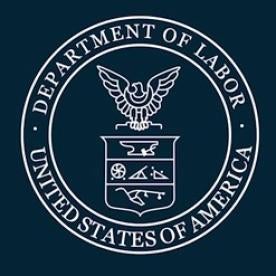The Department of Labor (DOL) has released another set of FAQs under the fiduciary rule. In light of possible changes to the rule, these FAQs give transition relief for providing a 408(b)(2) change notice of fiduciary status. The FAQs also clarify the scope of fiduciary advice for recommendations to increase plan participation and contribution rates.
408(b)(2) Disclosure Regulation Requirements
The 408(b)(2) disclosure regulation requires a covered service provider that reasonably expects to be a fiduciary to an ERISA plan to disclose to the responsible plan fiduciary its status as a fiduciary, along with a description of its services and fees. This disclosure does not require every service provider to state its fiduciary (or non-fiduciary) status—it is an affirmative obligation only on those service providers that will be providing services as fiduciaries. Further, the 408(b)(2) disclosure requirement only applies to ERISA plans and not to IRAs. This disclosure must be provided reasonably in advance of entering into an arrangement with the plan. Changes to the disclosure must be provided “as soon as practicable, but not later than 60 days” from the date the service provider is informed of the change (the “60-Day Rule”). The 408(b)(2) disclosures are conditions to obtaining a prohibited transaction exemption; failure to make them results in a prohibited transaction.
408(b)(2) and the Fiduciary Rule
While the fiduciary rule that became applicable on June 9 did not contain any special notice requirements (at least during the transition period from June 9 to December 31, 20171), the existing 408(b)(2) regulation—including the obligation to provide any changes within 60 days—is separate from any other requirement of the fiduciary rule or the related exemptions. As a result, some service providers have been confused about whether they need to provide a change notice related to their fiduciary status under the fiduciary rule, and if so, when such a change notice would be required.
Previously, based on the language of the 408(b)(2) regulation and the absence of any guidance from DOL, we had advised our clients who had become “new” investment advice fiduciaries on June 9 that they needed to provide change notices on or as soon after June 9 as possible, and no later than 60 days. We reminded them that this notice does not have to be a standalone document, and that a revised service agreement identifying fiduciary status and describing the fiduciary services would meet the requirements of 408(b)(2).
DOL’s latest set of FAQs provides significant relief through a very broad interpretation of the 408(b)(2) regulation based on the unique circumstances of the fiduciary rule, i.e., the initial delay, current transition period, and uncertainty as to the text of the final rule. Explaining this new relief, DOL said that service providers may have previously taken the position that they were not acting as fiduciaries but could now become so during the transition period. DOL also noted that it is re-examining the rule and exemptions, and a service provider who became a fiduciary under the current version of the rule doesn’t know whether it would remain one in the future.
Summarized below is the DOL guidance addressing this issue:
- Service Providers Who Believe They Are Not Fiduciary Advisers: Service providers who reasonably and in good faith believe they will not be providing fiduciary advice to plans after June 9 do not need to disclose fiduciary status. It is unclear why the DOL felt the need to make this “clarification,” since this is nothing more than a reiteration of the 408(b)(2) requirement that has existed since 2012. Given the breadth of the fiduciary advice definition under the rule, however, the biggest challenge will be to do a careful assessment of all possible grounds for fiduciary status.
- Special 408(b)(2) Transition Relief for Investment Advice Fiduciary Service Providers:Though 408(b)(2) generally requires service providers who expect to provide fiduciary advice to plans to disclose their fiduciary status, DOL will allow such service providers to avoid using the word “fiduciary” during the transition period, provided they accurately and completely describe the services they are providing that would make them fiduciaries. This relief may be somewhat of a trap, since disclosures are often general and lack the specificity that the FAQs seem to require. Service providers should tread carefully here.
- Special Rule Not Available if Provider Disclaims Fiduciary Status: The “non-disclosure” transition rule cannot be used, however, if the service provider’s contract or other disclosures provided to the client explicitly state that the service provider is not a fiduciary or is not providing fiduciary services. The transition period relief allows service providers to avoid using the word “fiduciary” to affirmatively describe their services, but it does not allow them to deny fiduciary status directly.
- No Disclosure Required for Unauthorized Actions: “Unauthorized and irregular” actions by employees or representatives of a service provider that is not a fiduciary and that are beyond the service provider’s contract terms (e.g., recommendation of a rollover by a call center representative who is only authorized to provide educational information) do not necessitate a disclosure of fiduciary status under 408(b)(2) even though that unauthorized action was fiduciary advice. While this has appeared to be the prevailing view among practitioners since 408(b)(2) was first adopted, it is the first time DOL has formally endorsed this view.
- Change Disclosures: Recognizing that a service provider would not have been “informed” of a fiduciary status change until the applicability date of the DOL rule (i.e., June 9) and that there was uncertainty regarding the substance and timing of the applicability date, the DOL will recognize compliance with the 60-day rule if the change disclosure is provided as soon as practicable after June 9, even if more than 60 days have elapsed. This is welcome relief, but only applicable to those who now are “new” fiduciaries beginning June 9, or whose service contracts do not describe their services sufficiently clearly.
So what does the new 408(b)(2) relief mean? In practical terms, the biggest effect is an extension of the 60-day deadline that otherwise would have expired on August 8. For those who need to make a change, there is now more time to do so. The most interesting change is that as long as the service agreement accurately describes the adviser’s services, and as long as the agreement or other writings do not disclaim fiduciary status, the adviser can avoid calling itself a fiduciary during the transition period, even if it is providing fiduciary advice. Note, however, that the FAQs only apply to situations where an adviser was providing services on June 9 but became a fiduciary on that date because of the changed definition. If the service provider begins advising a new plan client after that date, the full 408(b)(2) notice, including an acknowledge of fiduciary status, would be required.
Recommendations to Encourage Plan Participation
The FAQs also address whether recommendations that encourage plan participation or changes in deferral rates constitute fiduciary advice. Here are the highlights:
- Communications to plan or IRA participants encouraging plan contributions to meet “objective financial retirement milestones, goals or parameters” are not fiduciary advice, so long as there is no recommendation with respect to a specific investment product or investment strategy. This includes, for example, plan enrollment brochures recommending that a participant contribute a certain percentage of pay, targeted emails that suggest that a participant increase his contributions by a certain percentage each year, targeted emails that suggest an amount to contribute based upon the individual’s current plan savings, and call center assistance that suggests a specific overall retirement savings goal. It is not clear whether the reference to objective standards is intended to be limiting, but a safe course would seem to be to tie the recommendation to specific goals, parameters or milestones rather than a general encouragement to defer more.
- Recommendations to a plan fiduciary on how to increase plan participation are not fiduciary advice, even if a recommendation is based on specific attributes of the plan or its demographics.
These FAQs have been helpful in describing scenarios in which such education will not become advice.
We are encouraged by the DOL’s continued release of FAQs on the fiduciary rule. It seems to reflect an understanding that the rules are complicated and, given their implications for advisers and their firms, sometimes raise more questions than they answer. It will be interesting to see future guidance on the rule and exemptions.
[1] DOL has filed notice with the OMB to extend the transition period until July 1, 2019.






 />i
/>i

